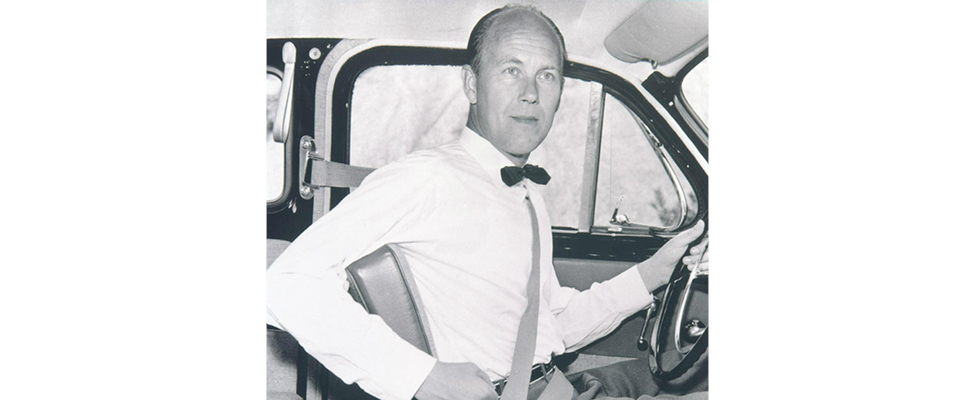Who invented the seatbelt? – Volvo’s 60-year safety tradition.
On August 13th, 1959, Volvo Cars delivered the first ever vehicle with a standard three-point safety belt to a dealership in Sweden. Sixty years later, the three-point seatbelt format has saved over a million lives globally. Let’s take a closer look at the history of the most important traffic safety innovation of all time.
Accident Prone
In the first half of the 20th century, safety standards were lax compared to present day. Traffic fatality numbers were much the same as they are today which is frightening considering the number of people on the road was just a fraction of what it is now.
The prevalence of vehicle accidents prompted Volvo to focus on injury prevention. A statistical analysis of 28,000 accident cases found, “the average injury-reducing effect of the harness proved to vary between 0 and 90 percent, depending on the speed at which the accident occurred or the type of injury”. The report concluded: “Unbelted occupants sustained fatal injuries throughout the whole speed scale, whereas none of the belted occupants was fatally injured at accident speeds below 60mph.”

Nils Bohlin, a former aeronautical safety designer, invented Volvo’s earliest iteration of the three-point safety belt. The V-type design was a seemingly obvious innovation and a much safer alternative to the current two-point seatbelt.

Nils Bohlin, the inventor of the three-point seatbelt.
Knowledge Share
Volvo Cars decided the invention was so significant, the patent for the invention was shared with every car manufacturer. It was believed to have more value as a free life-saving tool rather than something to profit from.
At the time, common knowledge said if a car company emphasized its safety innovation, the car wasn’t safe enough on its own. Drivers believed because vehicles were built like a Sherman Tank, there was no need for a seatbelt. In fact, as far as drivers were concerned, these seatbelts were a menace. Myths began circulating that seatbelts decapitated their drivers. People even believed being flung clear of the wreckage was better than becoming ‘trapped’ in the crash.

The 1959 Volvo Amazon was one of the first vehicles to come standard with a seatbelt.
Slowly, vehicles manufacturers across the world adopted the seatbelt as a standard safety feature but drivers were still hesitant. A new law was proposed mandating vehicles to be outfitted with a kill switch, making drivers unable to start the vehicle without a seatbelt. The law was met with such fierce opposition, it never came to fruition. Luckily traffic laws and driver habits have evolved since 1959. Seatbelts are now required by law and is second nature for most drivers.
Safety after the seatbelt
In 2002, Nils Bohlin was posthumously inducted into the National Inventors Hall of Fame. This year, to mark sixty-years of a tradition of safety, Volvo is launching its new initiative: Equal Vehicles for All, (EVA).

Nils Bohlin at the forty year anniversary of the invention of the three-point seatbelt.
Volvo Cars found safety innovations are mostly modeled around the average man. This left women more at-risk for whiplash and chest injuries.
Lotta Jakobsson, professor and senior technical specialist at Volvo Cars Safety Centre says EVA aims to correct this imbalance. “[EVA] means our cars are developed with the aim to protect all people, regardless of gender, height, shape or weight, beyond the ‘average person’ represented by crash test dummies.”
For example, Volvo Cars developed the world’s first pregnant crash test dummy to study how the seatbelt affects the woman and fetus.
Seatbelts save at least 11,000 lives every year and is the most effective protection in the event of an accident. Ultimately, Volvo Cars’ guiding principal is keeping every driver safe, which is why they have set their sights on zero causalities or serious injuries in a new Volvo car by 2020.






